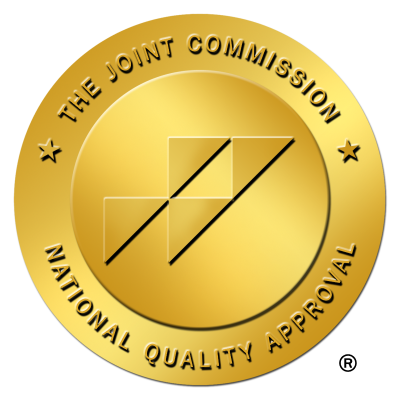Aftercare: Staying Strong After Rehab

Key Takeaways
- Structured aftercare recovery reduces relapse risk by up to 18 times compared to no ongoing support, making it essential for lasting sobriety success.
- Peer support groups cut relapse risk by 35% while family involvement improves treatment retention rates when healthy boundaries are maintained.
- Technology-based tools provide 24/7 support through mood tracking, crisis messaging, and behavioral pattern analysis to bridge gaps in traditional care.
- Dual diagnosis requires integrated treatment where licensed clinicians coordinate both substance use and mental health care simultaneously.
- Gradual transition from structured to independent living with clear milestones and ongoing peer connections provides the strongest foundation for long-term recovery.
Understanding Aftercare Recovery as the Cornerstone of Stability
Transitioning from rehab into daily life is often the toughest phase—I've seen even the most motivated individuals feel uncertain and overwhelmed. If you're feeling this way, you're not alone. Completing treatment is a huge milestone, but research consistently shows aftercare recovery is what truly safeguards your long-term sobriety.1 Without reliable, ongoing support, relapse risk skyrockets by more than eighteen times.1
Building your future starts now—with a structured plan, trusted connections, and evidence-based resources tailored to your needs. Every step you take in this direction is an investment in your stability and peace of mind.
Why Ongoing Support Matters for Lasting Sobriety
Time in treatment is only your starting line; lasting change requires daily, intentional support well after you leave rehab. Brain chemistry needs months—or longer—to stabilize, and familiar triggers don't disappear overnight.
This is where aftercare recovery becomes essential: even a strong will may crumble without ongoing, proactive supports. Studies confirm that people with reliable family involvement and counseling experience higher retention rates and sustained sobriety.8 Every system you put in place—peer groups, regular therapy, structure—offers crucial reinforcement when temptation strikes.
Long-Term Recovery Is a Continuous Process
Lasting recovery isn't a sprint—it's a steady process that demands patience, honest self-awareness, and continual commitment. The reality is, ongoing support takes root over months and often years as your brain and body heal from substance use.
Rebuilding those healthy neural pathways doesn't happen overnight; studies confirm that success in this journey relies on sustained support and realistic expectations.5 It's okay if progress feels slow—life in recovery means setbacks may happen, but each day you stay engaged in support builds strength and resilience.
"Remember, your healing timeline is uniquely yours—trust the process."
Risks of Relapse and the Role of Structured Support
If you're entering life after rehab, the fear of relapse is a reality—one I see often, and it's nothing to feel ashamed about. Without structured ongoing care, the odds can stack against you:
Triggers, stress, and isolation can derail even your strongest intentions. Structured support programs—regular check-ins, proactive skill building, and peer accountability—are proven guardrails, providing you with the safety net necessary to navigate real-world pressures.1
Statistics That Highlight Success Rates
Let's talk plainly about what the numbers reveal: consistent support makes all the difference. Here are the key statistics that show where your efforts matter most:
- 95.8% success rate at one month with structured programs
- 68% completion rate for those who maintain engagement after detox3
- 35% reduction in relapse risk through mutual support groups9
- 50% reduction in death risk with medication-assisted treatment for opioid disorders7
These facts aren't meant to discourage; they show where your efforts matter most. Leaning into ongoing systems and peer connections offers the solid foundation you need to build real, lasting sobriety.
Types of Support: Options Beyond Traditional Models
Your support options now extend far beyond weekly therapy sessions. Modern aftercare recovery includes structured sober living environments, intensive and flexible outpatient care, peer support groups, and technology-driven solutions like virtual check-ins and real-time recovery apps.
Family therapy helps rebuild trust, while medication-assisted treatment remains essential for opioid and dual diagnosis cases. You have every right to explore and combine these tailored resources as you create a recovery plan that fits your life and goals.
From Sober Living Homes to Virtual Support Tools
If you're moving from intensive care into daily life, sober living homes provide the structure and accountability that so many people find essential in early recovery. These environments offer stability through:
- Structured daily routines and curfews
- Community rules and peer accountability
- Regular house meetings and check-ins
- Gradual transition to independence
Research links these structured environments to higher treatment retention rates.4 For times when in-person support isn't accessible, virtual tools step up with real-time apps, mood trackers, and digital crisis support.
Integrating Family, Peer, and Professional Support
Solid ongoing care comes from building a support system that truly surrounds you—your family, peers, and professional counselors each play indispensable roles:
When these supports work in harmony, you get a multi-layered safety net for every challenge you face.
Technology's Role: Apps, Monitoring, and Online Check-Ins
Relying on technology for support isn't about replacing connection—it's about making vital tools available the moment you need backup. Modern recovery technology offers:
- Craving logs and mood tracking with AI-powered insights
- Instant access to counselors through secure messaging
- Virtual check-ins that reduce travel and scheduling barriers
- Behavioral monitoring to spot risky patterns early
- Crisis intervention tools available 24/7
While no app can replace your support circle, tech-driven care means extra accountability in your pocket, whenever you face a tough moment.5
Self-Assessment: Identify Your Needs
Before you choose any plan, take a focused self-inventory with unwavering honesty. Your progress depends on knowing your strengths, risk factors, and what truly supports you. From my years guiding clients, I know that support environments like sober living dramatically boost recovery retention—but they're not right for everyone.4
Diagnostic Questions to Guide Your Path
As you step into ongoing care, honest self-reflection is your toolbox for building a safer future. Consider these essential questions:
Living Environment Assessment
- Does your living environment support recovery, or does it harbor old triggers?
- Are there substances easily accessible in your home?
- Do your housemates or family members support your sobriety?
Risk Factor Identification
- Can you name the three riskiest situations you'll face?
- Do you know your strategy for each high-risk scenario?
- What emotions typically precede cravings for you?
Daily Structure Evaluation
- Is your daily structure strong enough to keep you grounded?
- Do you have meaningful activities to fill your time?
- Are you maintaining healthy sleep and eating patterns?
Research backs this: making these self-assessments is key for targeting long-term support needs and sustaining progress.5
Recognizing Risks, Strengths, and Support Gaps
Identifying your risks and strengths takes real courage—and honest reflection is your edge. Ask yourself: Which emotions or settings reignite cravings? Does stress lead you to isolate, or reach out?
If you notice certain patterns, that's not a flaw—it's a signal for where structured support or ongoing relapse prevention can reinforce your progress.1 Supportive family or community ties greatly increase your chances of staying engaged in treatment.8
"If your personal network is strained or enabling, professional guidance becomes essential."
Tailoring Plans to Dual Diagnosis or Family Needs
Your plan must adapt when you're coping with both substance use and a mental health diagnosis, or facing family complexities that demand extra care. Consider these specialized needs:
Evidence shows medication-assisted treatment can cut opioid-related death risk by half,7 making specialized care essential for complex situations.
Decision Framework for Successful Recovery
Facing the choices ahead in aftercare recovery can feel overwhelming—especially when emotions run high right after treatment. I've seen firsthand how a clear framework helps you filter options, so you don't get stuck by indecision or convenience alone.
Strong family involvement boosts results, but what works for them may not fit your needs.8 Use criteria like accreditation, outcome transparency, and scheduling flexibility to compare programs. This framework gives you confidence to select ongoing support that truly serves your continued sobriety.
Criteria to Evaluate Effective Programs
Choosing the right program isn't just about reputation—it requires a thorough, criteria-based assessment to protect your success. Start by confirming accreditation from recognized bodies, as this proves the facility meets high standards in clinical care, trained staff, and outcome tracking.
Measuring Engagement, Structure, and Flexibility
Truly effective programs deliver on three essentials: strong engagement, clear structure, and real flexibility. Insist on plans that lay out exact contact routines—like weekly individual therapy and dependable group sessions.
- Engagement Metrics: Regular check-ins, participation tracking, progress monitoring
- Structure Elements: Consistent scheduling, clear protocols, defined milestones
- Flexibility Features: Multiple session options, virtual appointments, crisis availability
Top programs document solid outcomes; those with 68% completion rates signal honest structure and follow-through.3
Importance of Accreditation, Privacy, and Outcomes
When you're evaluating programs, accreditation isn't just a formality—it's your first safeguard. Prioritize providers accredited by:
Honest providers readily share real outcomes, not just promises. Look for documented success rates, such as completion rates up to 68% for those finishing their programs.3
Weighing Peer, Family, and Clinical Involvement
A truly effective plan blends peer connections, family support, and professional clinical guidance—each reinforcing your progress in its own unique way:
- Peer Support: Empathy and real accountability, reducing relapse risk by 35%9
- Family Support: Essential encouragement, boosting treatment retention rates8
- Clinical Professionals: Evidence-based care and crisis management strategies
Programs that get this mix right establish clear boundaries and open communication, preventing mixed messages about your recovery journey.
Ethical Considerations and Respecting Personal Boundaries
Every effective journey must put your dignity and autonomy front and center. Ethical support means you are never pressured or left in the dark about care decisions—your preferences and boundaries shape your path.
Protecting Privacy in Digital and In-Person Care
Safeguarding your privacy throughout ongoing support isn't just good practice—it's essential for building trust and confidence. Digital services must guarantee:
- HIPAA-compliant platforms for all virtual therapy sessions
- End-to-end encryption for mood tracking and messaging
- Secure data storage with clear retention policies
- Transparent disclosure policies about when information is shared
For in-person support, verify that staff reinforce confidentiality at every session, and group information is never shared beyond medically necessary limits.6
Ensuring Evidence-Based, Nonjudgmental Support
Choosing support grounded in proven, evidence-based therapies is a commitment to your lasting stability. Effective post-treatment programs use interventions validated by clinical research:
You deserve care teams who respond with guidance and true empathy—not criticism—when setbacks happen.
Transparency in Success Rates and Limitations
When you're evaluating options, demand full transparency about what programs achieve—and where their limits lie. Honest providers share exact success rates:
"Quality programs define what 'completion' means, clarify outcomes for different populations, and tell you up front if dual diagnosis or unique needs might require extra support."
Some reach up to 95.8% retention at one month, but rates can drop as low as 23.6% at one year if ongoing support falters.1 This openness helps you set practical expectations and make choices that genuinely strengthen your long-term recovery.
Decision Matrix: Matching Programs to Personal Needs
Deciding between programs can feel daunting—but you don't have to make this choice on gut feeling alone. A structured decision matrix helps organize your top options and score each program by essentials like schedule flexibility, professional expertise, and integration with your existing support system.
Scoring Models: Flexibility, Access, and Engagement
Choosing the right program means scoring your options with honest precision. Evaluate each program on three practical axes (all rated 1–10):
Structured ongoing support dramatically reduces relapse risk by up to 18 times.1 Give extra weight to factors that matter most for your situation.
Adjusting for Dual Diagnosis and Family Involvement
When weighing options, develop scoring criteria that specifically address dual diagnosis needs and the realities of family dynamics. For dual diagnosis, give high scores to programs with:
- Integrated treatment (mental health and substance use together)
- Licensed clinicians trained in co-occurring disorders
- Strong coordination between providers
- Medication management for complex cases
For family involvement, focus on programs offering dedicated family education, enforceable boundary-setting practices, and the option to keep personal counseling separate. When these factors reflect your situation, double their weighting in your decision matrix.
Incorporating Technology and Sober Community Factors
Selecting a program today means seriously considering both digital support tools and community-based resources. Score technology offerings such as:
- On-demand crisis response available 24/7
- Encrypted counselor messaging for secure communication
- Accurate mood tracking with personalized insights
- Virtual group sessions for accessibility
Evaluate how programs link you to sober communities and mutual support groups; joining peer-led groups can lower your relapse risk by 35%.9 Trust your instincts and weight your decision matrix in favor of options that match your comfort with virtual tools and your need for genuine, in-person connection.
You’re not alone in this.
When mental health challenges and addiction intersect, it can feel isolating. At Arista, we offer compassionate, evidence-based, and trauma-informed care to help you heal, grow, and move forward.
Practical Pathways to Build Your Plan
Turning knowledge into action is where aftercare recovery becomes truly life-changing. I've seen many people stall after treatment, overwhelmed by choices or unsure how to put their relapse prevention plan into motion. If you're feeling this way, remember: every small step forward is progress.
Success depends on translating your assessment and support system decisions into daily routines and real-world engagement. Research shows that people who actively implement their plan—instead of keeping it theoretical—are far more likely to reach their recovery milestones and avoid setbacks.3
Implementation Pathways for Every Recovery Stage
Every phase calls for a precise game plan shaped by your current strengths and vulnerabilities. In those first 90 days, research backs what I've witnessed countless times: sober living homes or similar structured settings sharply improve retention when stability feels shaky.4
Transitioning From Inpatient to Outpatient Support
This move from residential treatment into outpatient care is a major turning point—not just logistically, but emotionally. I've seen countless people succeed by mapping out their next steps before discharge:
- Confirm your outpatient counselor and first appointment
- Lock in your appointment schedule for the first month
- Prepare crisis response protocols that are ready and accessible
- Identify your support network contacts for immediate connection
- Plan your daily structure to replace institutional routine
Data shows success rates reach 68% for those who complete detox, yet the weeks following discharge remain high-risk if you lose connection or structure.3
Leveraging Peer, Family, and Community Resources
Expanding your network means intentionally weaving together peer groups, family support, and community resources—each with a crucial role:
Peer-led support groups give you relatable accountability, which research shows reduces relapse risk by 35%.9 This approach works best when you want multi-layered, real-life support that keeps your motivation strong.
Integrating Technology for Real-Time Relapse Prevention
If you're building your plan, real-time technology is a resource I absolutely vouch for—especially when facing situations that trigger cravings or emotional distress. Secure recovery apps, AI-powered mood tracking, and instant messaging with counselors let you access supportive interventions wherever you are.
Technology Integration Timeline
- Week 1: Download and set up recovery apps
- Week 2: Begin daily mood tracking
- Week 3: Connect with virtual counselor support
- Week 4: Integrate crisis response features
These tools don't replace in-person connection, but they offer 24/7 relapse prevention and accountability, which is essential for long-term stability.5
Resource Planning: Time, Budget, and Skills Assessment
Effective planning thrives when you anchor your approach in honest resource assessment. Start by mapping out your time, not only for sessions, but for travel, routine-building, and daily check-ins that reinforce sober habits.
Budgeting for Sober Living, Therapy, and Tech Tools
Budgeting for effective support means looking at your real-world needs—not just session costs. Plan for both direct and indirect expenses:
The most successful recovery budgets address all these areas, as research links thorough planning to engagement rates of 68% for those completing detoxification.3
Timelines: Immediate and Long-Term Milestones
Every successful plan needs a clear timeline—one that celebrates small victories while allowing for real-life setbacks:
- First 30 days: Focus on housing stability and daily structure
- Months 2-6: Deep skill-building and rebuilding trust
- Months 6-24: Maintaining independence with ongoing peer networks
- Year 2+: Long-term maintenance and giving back to community
Research shows 68% of those completing detox remain engaged long-term with this approach.3This strategy suits individuals who thrive with steady structure and patient progress.
Skill Building: Life, Coping, and Wellness Practices
Developing skills means committing to three vital areas—independent living, coping strategies, and personal wellness:
Independent Living Skills
- Consistent sleep schedules and meal preparation
- Financial planning and budgeting
- Time management and daily routines
- Household maintenance and organization
Coping Strategies
- Mindfulness and stress reduction techniques
- Healthy communication skills
- Conflict resolution and boundary setting
- Crisis management and emergency planning
Personal Wellness Practices
- Regular exercise and physical activity
- Nutrition planning and healthy eating
- Social connection and relationship building
- Spiritual or meaning-making practices
Recovery truly is a long-term journey; sustained, evidence-based skill reinforcement carries you through setbacks and into lasting sobriety.5
Your Next 30 Days: Personalized Action Checklist
Your first 30 days after treatment are foundational—these weeks demand daily follow-through if you're committed to strong support. I've walked alongside many individuals in this exact spot: feeling the pressure to turn a written plan into real habits.
Short-Term Goals and Progress Tracking
In these critical first 30 days, clarity and structure are your strongest allies. Set specific benchmarks and track three core metrics:
Research affirms that people who actively monitor progress and maintain structured routines are far more likely to remain engaged in their continuing care.3
Connecting With Support Networks and Programs
In your first week, commit to connecting with a variety of support systems—aim for at least three that meet different needs:
- Schedule your first session with an outpatient counselor
- Locate a peer-led support group (meetings reduce relapse risk by 35%)9
- Save emergency contacts for immediate help
- Explore digital recovery apps to supplement in-person support
- Arrange family meeting to discuss boundaries and communication
These steps lay a solid foundation for building your recovery support network and help bridge moments of vulnerability.
Adjusting Your Plan Based on Early Outcomes
Staying flexible is essential—what works on paper may change once real life intervenes. If you hit snags (like a support group timing clash or tech tools falling short during a tough moment), don't see it as setback; see it as valuable feedback.
"Research confirms recovery is a long-term process built on ongoing support and course corrections."
Review your progress each week with a counselor, pinpoint where gaps appear, and collaborate on alternatives. This adaptability builds resilience and keeps your plan active, personal, and effective.5
Frequently Asked Questions
Stepping into aftercare recovery naturally brings a flood of questions—about timing, balancing responsibilities, and what truly supports lasting change. If you're feeling overwhelmed, you have good company; nearly everyone wrestles with these choices as they build their new foundation. Research shows engagement in continuing care leads to a 68% completion rate after detoxification.3 The following FAQs focus on practical, evidence-based guidance for navigating this critical phase.
How do I choose the right aftercare program if I have a dual diagnosis?
If you're balancing aftercare recovery with both a substance use disorder and a mental health concern—like depression, anxiety, or trauma—you deserve an integrated program that tackles both together. Seek out services where licensed clinicians are experienced with co-occurring disorders and provide coordinated care.
Ask about trauma-informed therapy and dual diagnosis expertise. Medication-assisted treatment lowers opioid-related death risk by half,7 so review those options. Clear protocols and person-first support are critical for lasting stability.
Are there insurance or financial assistance options available for aftercare programs?
Worrying about affording ongoing support is incredibly common, and you are not alone in this stress. Most health insurance—whether through work, the marketplace, or Medicaid—covers substance use treatment (including continuing care) as part of essential health benefits.
Double-check with your provider about outpatient counseling, group therapy, and medication-assisted treatment, which research shows can halve death risk in opioid recovery.7 If costs are a barrier, explore sliding-scale clinics, community grants, state-funded programs, and nonprofit support.
How do aftercare plans adjust for co-occurring mental health conditions like depression or PTSD?
When ongoing support involves both substance use and mental health conditions like depression or PTSD, your support plan needs real customization. Choose integrated programs that acknowledge how mood symptoms can spark cravings or PTSD can undermine resilience.
Insist that your providers use trauma-informed, person-centered approaches—licensed clinicians must coordinate care and adjust interventions as your symptoms change. Research confirms that for opioid use, medication-assisted treatment cuts death risk by half.7
What role should medication-assisted treatment (MAT) play in ongoing aftercare?
Medication-assisted treatment (MAT) is a vital lifeline for many in ongoing support, especially if opioid use disorder is part of your story. Evidence shows that MAT cuts the risk of death by half for people with opioid use disorders.7
If you've begun MAT in residential care, don't drop the baton—carrying it into outpatient recovery, with close medication monitoring and a collaborative team, is essential. You'll gain the most when MAT is joined with therapy, counseling, and peer support.
How much family involvement is too much in the aftercare phase?
Finding healthy family involvement means respecting your growing autonomy as you rebuild. Yes, family support can make a genuine difference—research confirms it improves treatment retention rates—but over-involvement backfires when relatives start making choices for you, intrude in therapy, or constantly monitor your actions.8
If you notice relatives pressuring you, attending sessions uninvited, or struggling with your independence, it's time to set clear boundaries. Support thrives on encouragement, not control; your recovery should be built on trust in both your support network and your own decision-making.
What are some warning signs that my current aftercare plan isn't working?
Spotting gaps in your plan takes honest self-reflection—if you've started withdrawing from support systems, missing therapy or group meetings, or noticing old cravings returning, these are real warning signals. Watch for persistent irritability, trouble sleeping, or sliding back into risky routines.
If even daily stress feels unmanageable or you're making excuses to avoid accountability, it's a sign to reassess. Research shows 68% of those who complete detoxification remain engaged when their support stays strong and responsive.3
How do I transition from a highly structured aftercare plan to independent living without risking my recovery?
Graduating from a highly structured program to independent living takes real intention—and you absolutely deserve support through this process. Don't rush your transition; research affirms that a gradual, step-down approach provides the best shot at lasting stability.5
Start by reducing session frequency gradually (for example, shift therapy from weekly to bi-weekly), but maintain your attendance in mutual support groups, which are shown to cut relapse risk by 35%.9 Build up life skills and confidence before reducing formal supports.
What are the typical costs for aftercare, and what ranges should I expect for different options?
Planning for ongoing support means being honest about the resources you'll need—financial, time, and practical support all matter. Costs vary depending on the type and intensity of continued support you choose: structured sober living, outpatient therapy, peer-led group counseling, or technology-based programs.
Research shows that engagement in quality support, regardless of the model, leads to a 68% completion rate after detoxification.3 Budget thoughtfully for indirect needs like travel and child care, not just obvious treatment expenses.
How long does it usually take to see the benefits of aftercare after leaving rehab?
You're not alone if you feel anxious to see results from ongoing support—steady progress takes time, and that's perfectly normal. Most individuals start noticing early gains, like improved routines or stronger crisis management, within 2–4 weeks of active participation.
Research confirms long-term success demands ongoing effort, with 68% of people completing detox staying engaged when they prioritize these supports.3 Deeper emotional stability and resilience often emerge around months 3–6.
Can I maintain my job or school schedule while participating in aftercare?
Many people feel anxious about balancing work or school, but you are absolutely not alone in this challenge—and it is possible. Outpatient and continuing care programs are built to support your commitments, offering evening sessions, weekend groups, and accessible virtual check-ins.
In my experience, maintaining routine employment or academic schedules gives structure and purpose, which strengthens your recovery journey. Providers with flexible options help you stay engaged; research finds up to 68% engagement for those completing detoxification.3
What should I do if I experience a relapse during aftercare?
If you experience a relapse during ongoing support, know that you haven't failed—this is a moment to regroup and strengthen your support systems. Take immediate action: contact your counselor, sponsor, or a trusted person to help you navigate this situation safely.
Research shows that setbacks, while common, can be powerful learning opportunities; individuals who remain engaged with continuing care after relapse achieve a 68% completion rate for detoxification programs.3 Reflect honestly on what triggered the lapse and revise your relapse prevention plan.
How can technology-based aftercare programs help reduce the risk of relapse?
If you feel anxious about facing real-world triggers after treatment, know you're not alone—many people have stood where you are now. Technology-based programs become your bridge to round-the-clock support, even on days when motivation wavers.
Evidence shows that digital relapse prevention tools—like secure apps for mood tracking, instant counselor messaging, and real-time alerts—extend your safety net beyond office hours or meetings, filling critical gaps when traditional services aren't available.5
How does family involvement impact aftercare outcomes, and what are best practices for healthy support?
Support from family can make a powerful difference in your journey—I've seen participants with dedicated family involvement stay stronger in continuing care, and the data backs this up: retention rates improve with family support.8
But healthy support means more than good intentions. Be intentional about setting boundaries that encourage your independence and prevent enabling. The most effective families engage in structured education sessions, communicate openly about recovery needs, and respect your right to lead your own journey.
How do I vet the quality and accreditation of an aftercare provider?
Vetting a provider starts with asking hard questions and knowing what real standards look like. Confirm the program is accredited by organizations such as The Joint Commission or CARF International—these bodies require frequent audits and strict clinical standards.
Reliable programs never hesitate to show you completion rates (look for up to 68% among those finishing detox),3 share how they track success, and clarify staff credentials. Scrutinize privacy policies to ensure HIPAA compliance, especially if technology-based support is involved.
Is peer support or sober coaching effective in aftercare, and what should I look for in a peer support group?
Peer connections are one of the strongest supports you can have during ongoing care. Research clearly shows that mutual support groups lower relapse risk by 35%.9 I encourage you to seek groups with reliable meetings, ground rules for respectful communication, and a mix of members in varying recovery stages.
Quality sober coaches are certified and maintain boundaries, always guiding you to clinical resources for deeper issues. Prioritize programs that combine practical skill building and peer accountability—these give you the real-world tools and community support needed for lasting sobriety success.
Conclusion
Completing treatment is only the start—aftercare recovery is how you build lasting strength for the real world. No one expects this phase to be easy, and that's completely normal. Engaging with ongoing, evidence-based support systems improves your odds of sustaining sobriety; research shows a 68% completion rate among those who maintain structured care after detoxification.3
Remember: seeking support means you're investing in your own future. Trust in your daily effort, adapt your recovery strategy as life evolves, and celebrate every milestone you reach. You absolutely have what it takes to build a strong, stable foundation.
References
- SCIRP Study on Addiction Treatment Outcomes. https://www.scirp.org/journal/paperinformation?paperid=73388
- United Recovery Project on Success Rates. https://unitedrecoveryproject.com/rehab-blog/what-is-the-success-rate-of-drug-and-alcohol-rehabs/
- Legacy Treatment on Rehab Success Rates. https://www.legacytreatment.org/blog/rehab-success-rate-statistics/
- Willingway on Transitional Living Benefits. https://willingway.com/transitional-living-post-addiction-treatment/
- NIDA Principles of Drug Addiction Treatment. https://drexelmedicine.org/patient-services/the-caring-together-program/nida-principles/
- CDC on Treatment Options. https://www.cdc.gov/overdose-prevention/treatment/index.html
- Recovery Centers of America on MAT. https://recoverycentersofamerica.com/medication-addiction-treatment/
- Ikon Recovery on Family Involvement. https://www.ikonrecoverycenters.org/ultimate-guide-to-family-involvement-in-recovery-milestones/
- Mobilize Recovery on Peer Support. https://www.mobilizerecovery.org/the_power_of_connection_peer_support_and_mutual_support_groups
Support that moves with you.
You’ve taken a brave first step. At Arista Recovery, we’re here to help you continue with best-in-class care designed for long-term healing and support.
.webp)






